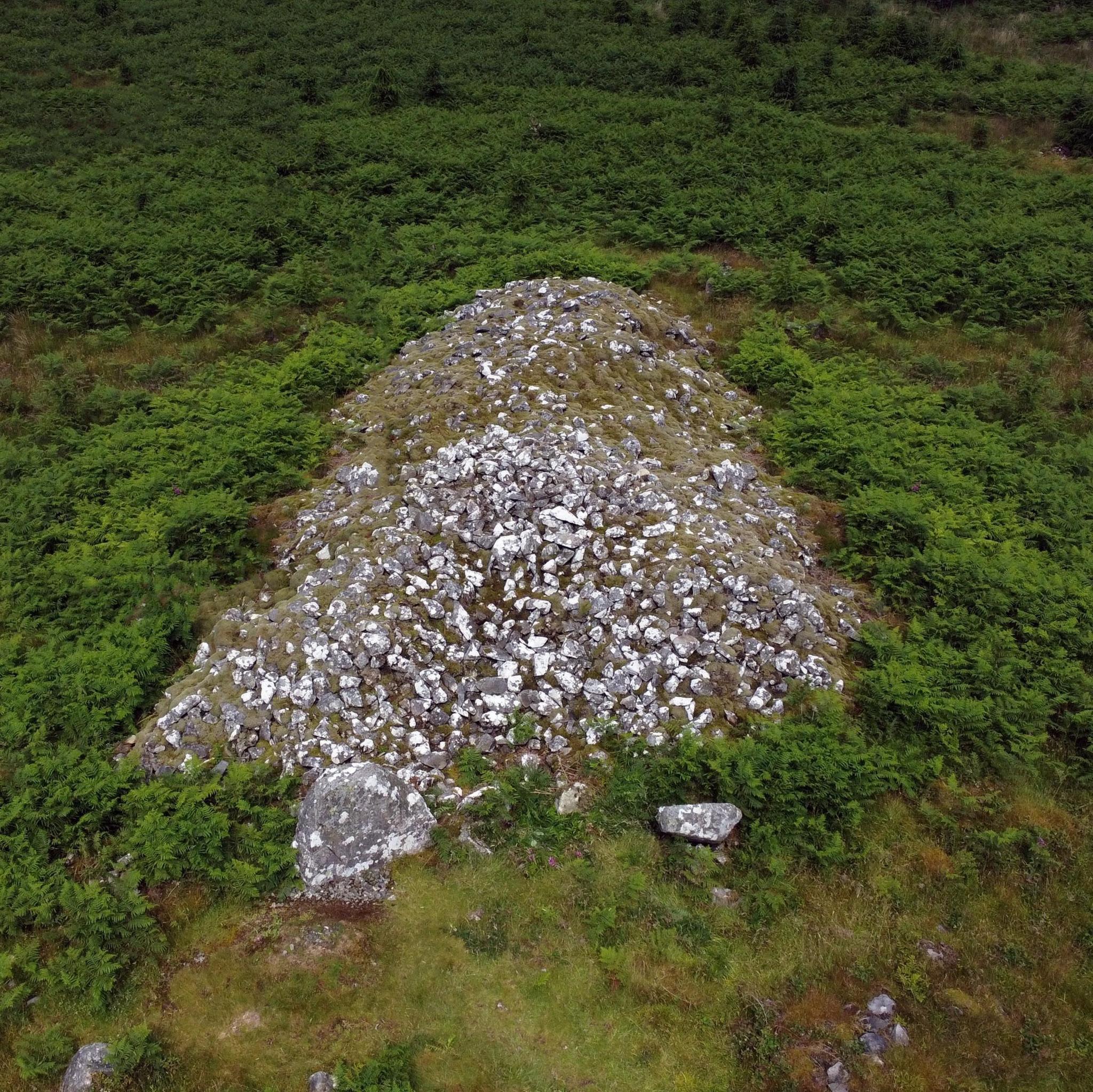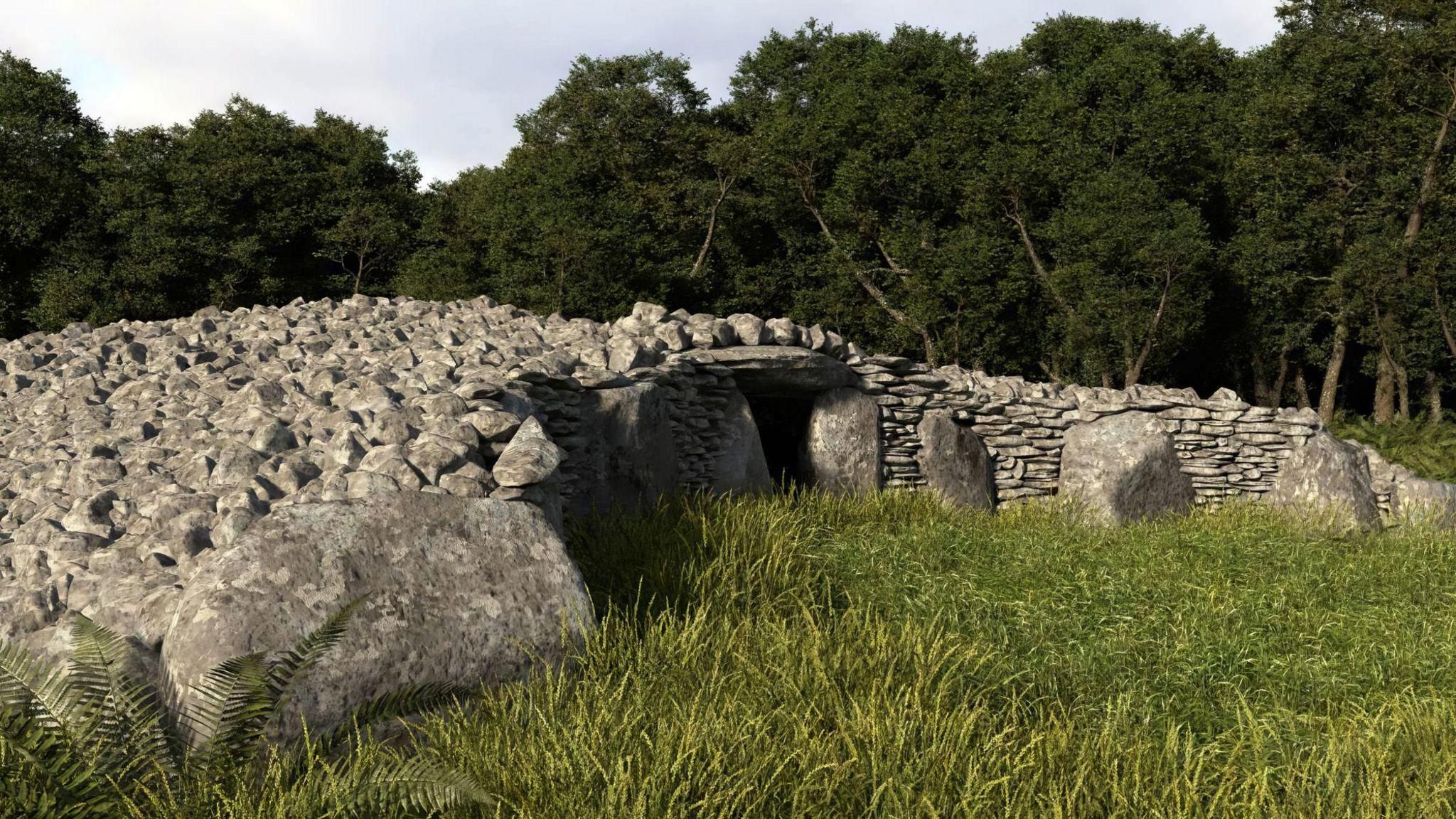3D model brings ancient cairn 'back to life'
See the Neolithic chambered cairn recreated in 3D
- Published
Have you ever visited an ancient ruin or site and wondered what it looked like to the eyes of people who were there hundreds or thousands of years ago?
Well, now archaeologists are able to show off how an ancient chambered cairn in Galloway might have looked 6,000 years ago.
A cairn is a mound of rough stones built as a memorial or landmark.
And an enormous pile of stones is all that now remains of the structure built by Neolithic farmers at Boreland in Knockman Wood, north of Newton Stewart.
But now a 3D model of the tomb, made by Forestry and Land Scotland (FLS), has brought it to life, using hundreds of photographs taken from a drone.

All that remains of the cairn now is a pile of stones
"This... allows us to imagine what this Clyde Cairn - a type of tomb characteristic of south-west Scotland – would have looked like when it was first built," explained FLS archaeologist Matt Ritchie.
"The architecture suggests its use as both a tomb for the dead, where people placed the deceased in the chambers within the cairn, and a space for the living, where people could pay their respects."
"They were built by a vibrant ancient society with beliefs, traditions and practices that would seem very strange to us today," he added.

A video now allows visitors to see how the cairn might have looked when it was in use
Mr Ritchie added that hopefully watching the video and seeing the cairn come to life could answer some questions visitors might have.
"Of the cairns that survive across Scotland, some remain closed, their secrets hidden beneath huge mounds of stone, such as at Boreland in Galloway," he said.
"Others bear the ravages of time, their features masked by rubble and collapse, or have been disturbed by treasure hunters, their chambers ripped open and exposed.
"Many more have simply been lost over time."
